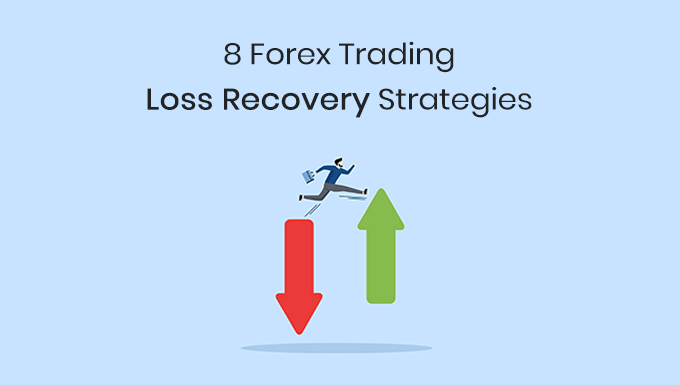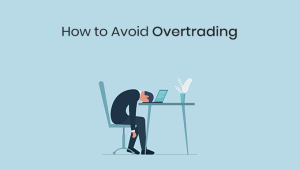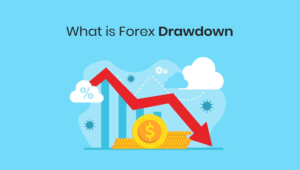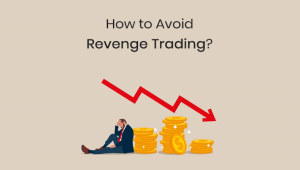We’ve all been there—staring at the screen, heart pounding, as we witness our well planned forex trade fall apart before our eyes. When you trade on the volatile Forex market, you’re bound to experience losses. However, the question isn’t whether you’ll face losses, but rather, how you bounce back from them. Recovering from a loss in forex trading isn’t just about immediate damage control—it’s about refining your strategies and fostering resilience for long-term success. So, how to recover from forex trading losses? This article will uncover 8 forex trading loss recovery strategies that will help you cut your losses and bounce back in your trading game.
Understanding Forex Trading Loss
The Reality of Forex Trading
Let’s be clear: Losses in forex trading are inevitable. Currency markets are highly volatile, with exchange rates influenced by a dizzying array of factors—from geopolitical events to economic indicators. As such, even the most seasoned traders experience losses. The winning formula in forex trading is to cut down your losses and maximize your profits.
Why Do Forex Traders Experience Losses?
Forex traders often incur losses due to factors such as lack of knowledge, poor risk management, emotional trading decisions, or the application of ineffective trading strategies. Understanding the root cause of your losses is the first step to recovery.
8 Forex Trading Loss Recovery Strategies
1. Accept your losses
When you are experiencing a losing trade, one of the most important things you should do is act fast and cut your losses quickly. This means that you should get out of trades that are losing money as soon as possible to avoid losing even more money. Traders should set a stop loss order before each trade, which will automatically close the trade if the price hits a certain level. This helps traders limit the amount they can lose on each trade.
2. Analyze your losses
Dedicate some time to understanding why you incurred the loss. Analyze the specific trades that went wrong. Was it due to an unexpected market event, an error in analysis, or a faulty trading strategy? Understanding the root cause is critical for preventing similar losses in the future.
3. Evaluating your trading strategy
A key part of recovering from Forex trading losses involves conducting a post-mortem analysis of your trades. Take a step back and assess your overall trading strategy: Scrutinize every element of your trading strategy—entry and exit points, risk-to-reward ratio, position sizing, choice of currency pairs, timeframes, and so on. Identify which parts are leading to losses.
Once you’ve identified problem areas, create a new plan to address them. This could mean setting different entry or exit points, choosing different currency pairs, or changing your position sizes.
4. Proper risk management
Effective risk management is a trader’s best friend. It involves understanding and mitigating the potential losses in each trade. Using techniques such as setting stop-loss orders, diversifying your portfolio, and not investing more than you can afford to lose can protect you from devastating losses.
5. Continuous learning and improvement
Forex markets are continually changing, and so must your trading strategies. Always stay informed about current market trends and economic events. There are plenty of professional Forex trading courses out there, both online and offline. Such courses can provide structured learning pathways and cover everything from the basics to more advanced strategies. While these can be an investment, they can pay off in the long run by helping you avoid costly mistakes.
6. Practice with demo accounts
A demo account is a risk-free platform offered by most brokers where you can place trades with virtual money. It’s an excellent way to fine-tune your skills, especially after adjusting your trading plan. Use a demo account to test your revised trading strategy. It allows you to see how your strategy would perform under live market conditions without risking real money. It’s a risk-free way to see if your adjustments are effective before you apply them to your live account.
7. Automated trading systems
Today, various Forex trading tools and software can assist in analysis and decision-making. For example, automated trading systems, also known as algorithmic trading or forex bot trading, can be a game-changer. These systems allow you to set specific parameters for trades, which the software then executes on your behalf. This can help to reduce human error, ensure consistency, and remove emotion from your trading decisions, thereby potentially increasing your chances of successful trades.
8. Seeking professional help
Consider enlisting the help of a forex trading mentor or joining a trading community. A mentor who is a seasoned trader can offer you personalized advice, help you identify where your strategy went wrong, suggest improvements, and provide you with emotional support—especially in times of loss. Also, reach out to mentors or trading communities for feedback on your revised strategy. Their perspectives can help you spot any potential issues.
Resilience: The Ultimate Key to Recovery
Above all, resilience is the ultimate key to recovery in Forex trading. Losses can be disheartening but remember: each loss is a lesson. Use setbacks as opportunities to refine your strategy, deepen your understanding, and strengthen your resilience. After all, success in Forex trading isn’t about never falling—it’s about getting up every time you do.
Conclusion
Forex trading is a risky venture where losses are inevitable. However, these 8 forex trading loss recovery strategies can turn these setbacks into trading success. By understanding why losses occur, evaluating your trading strategy, embracing risk management, staying abreast of market trends, leveraging technology, and seeking professional help, you can bounce back stronger from forex trading losses. Remember, resilience is your greatest asset—never let a loss deter your trading journey.
FAQ
Q: What’s the first step in recovering from Forex trading losses?
A: The first step is to understand why the loss occurred. This involves analyzing your trading strategy, market conditions, and trading decisions.
Q: How can I mitigate risks in Forex trading?
A: Risk management techniques such as setting stop-loss orders, diversifying your portfolio, and not investing more than you can afford to lose can help mitigate risks.
Q: Can technology aid in Forex trading?
A: Yes, various Forex trading tools and software can assist in analysis, decision-making, and even execute trades based on pre-set rules, helping to remove emotion from trading decisions.
Q: Should I seek professional help after a Forex trading loss?
A: Seeking help from experienced traders or mentors can provide valuable insights and advice. Moreover, they can offer emotional support in times of loss.
Q: What’s the key to bouncing back from Forex trading losses?
A: The key is resilience. Treat each loss as a lesson and an opportunity to refine your strategy and deepen your understanding of Forex trading.






